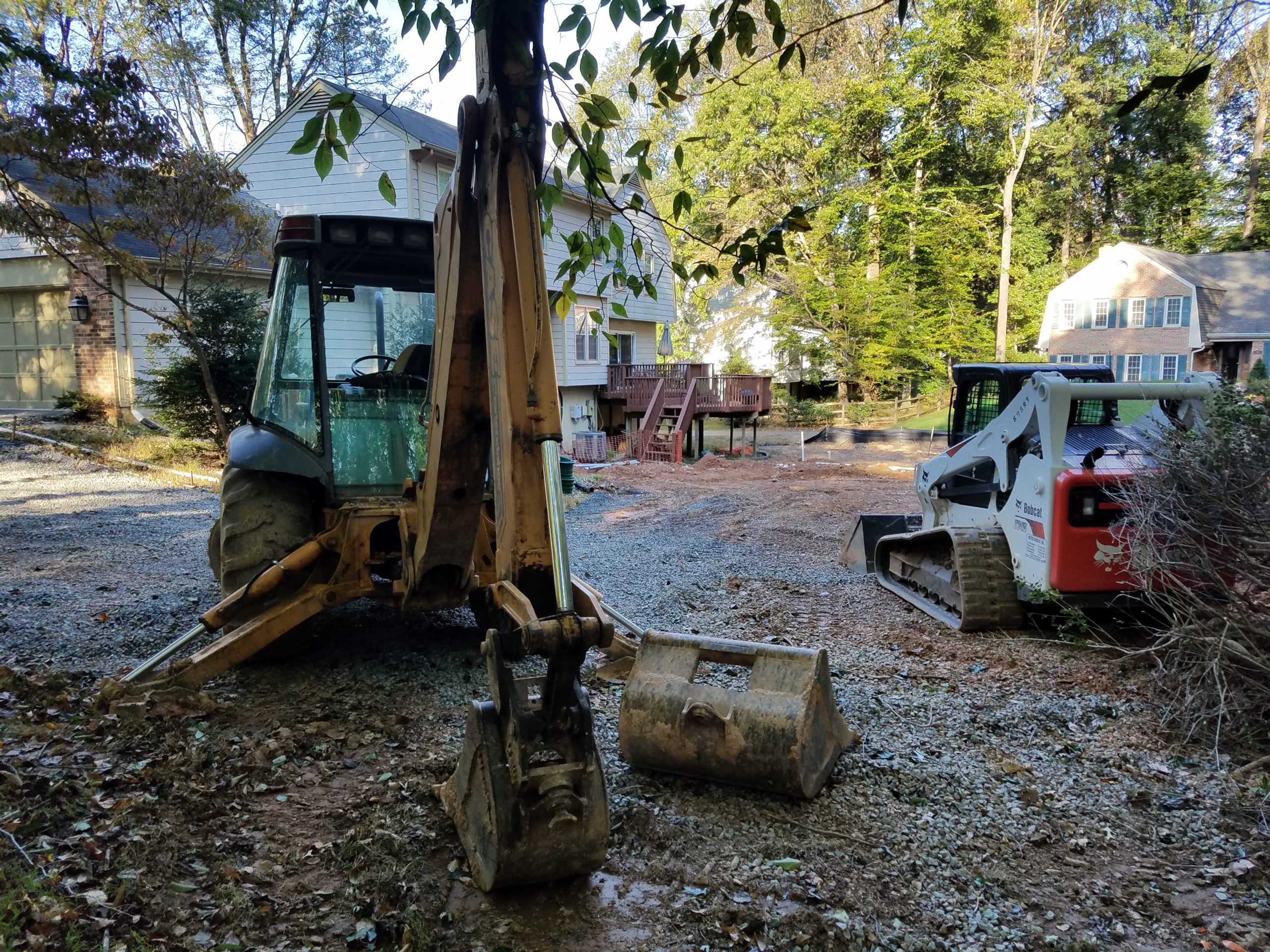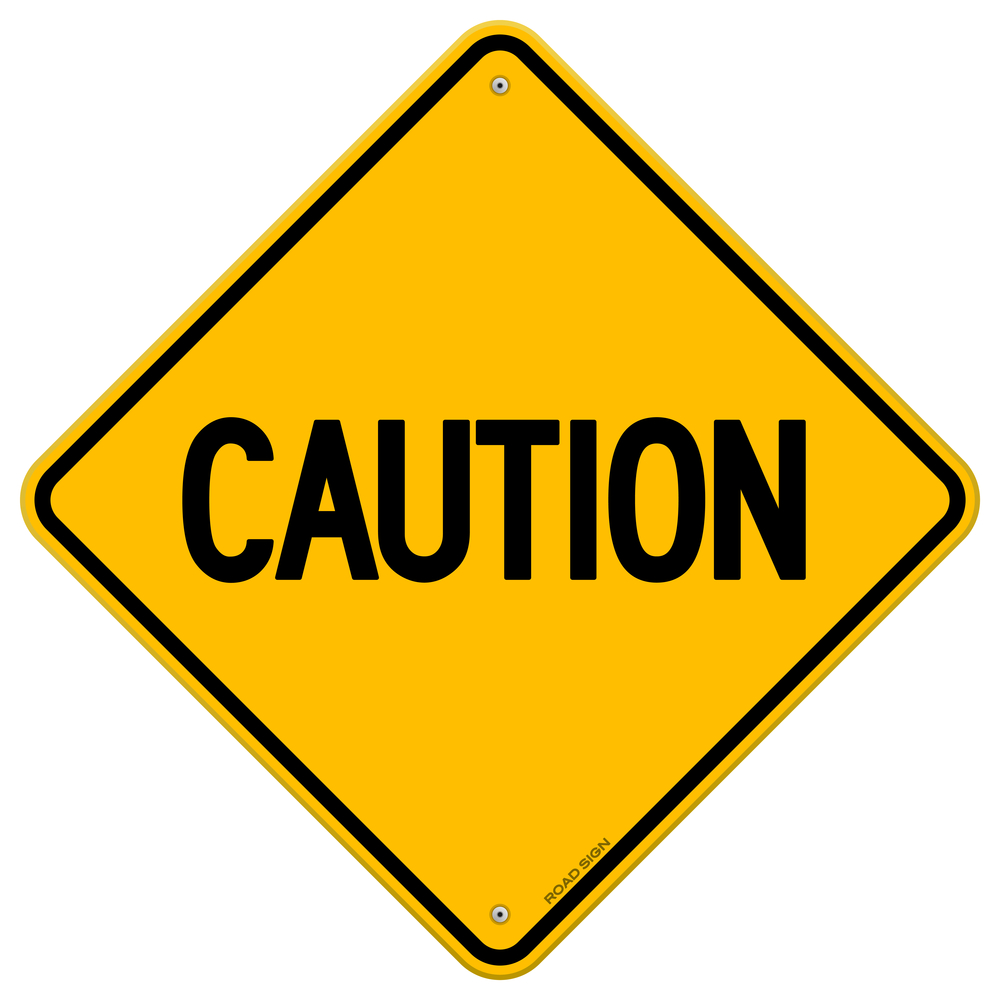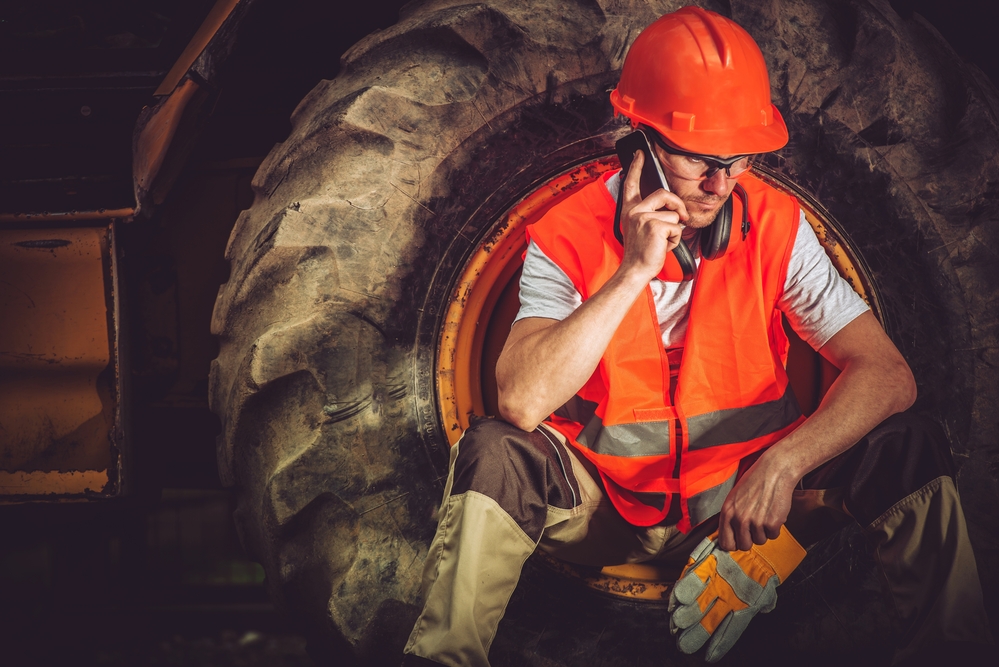 A skid steer loader with backhoe attachment or a backhoe loader in general can be very productive if it is operated safely and efficiently. Backhoe safety is a must, the best way to get the job done safely and efficiently is to know:
A skid steer loader with backhoe attachment or a backhoe loader in general can be very productive if it is operated safely and efficiently. Backhoe safety is a must, the best way to get the job done safely and efficiently is to know:
- the job site
- your equipment
- daily inspections
- regular maintenance
It may be a good idea to sign up for backhoe safety training.
Safety Features
Even though the models of backhoes will vary, there are safety features with all of them that include steps and grab handles for getting on and off of the machine. Backhoes safety includes features frame lock levers and attaching levers to keep the backhoe securely fastened to the loader frame during operation as well as transporting.
Chains
In addition to these standard safety features, there are some backhoes that provide a safety chain. The safety chain will prevent the backhoe mounting frame from rotating backwards and unexpectedly trapping the operator, which can result in serious injury or death. Therefore, it is always important to know and check all of the mounting and attachment points and the safety chain before you operate the backhoe.
When transporting equipment chains are an important safety tool. Always secure your equipment with proper chain size and tension. Secured equipment, protects you, associates and our community.
Inspections
If you’ve attached the backhoe to the loader, you should take a moment to inspect it and perform any necessary maintenance. When you check for broken or damaged parts, also making sure to check for leaks, cracks, excessive wear, hydraulic lines & control levers, you can be certain of your backhoe safety and operation. Check oil, fuel and air filters. Provide regular maintenance for your safety and maximum equipment productivity.
Backhoe Safety Tips
The warning and safety signs and instructional decals are very important and will help you to avoid injury. You should always take them seriously and replace any damaged or missing decals.
Daily Maintenance
Every 8 hours or so, you should grease all of the zerk fittings, and check the hydraulic fluid and oil and a daily basis. If the fluid is low, the backhoe loader will not operate. Always take the time to check your machine.
Standard Procedure
Anytime you have to leave the operator seat of the backhoe, basic backhoe safety dictates you lower the bucket or attachment to the ground (buckets are to be flat on the ground), turn the engine off, remove the ignition key, then exit the machine.
Outriggers
When the time comes to drive to the next job site, you should always make sure that you have fully raised both the front and rear stabilizers and make sure you’ve put the backhoe seat into the
“down” position for better visibility. Before you drive off, make sure that you’ve installed the transport locking pin.
Here are some other things to keep in mind:
- Always select the right size bucket for the job.
- Stake out the work area that is going to be excavated and use flags to mark the area.
- Never work in areas that have inadequate overhead clearances.
Swing Area
Always make sure that you keep bystanders or other workers out of the swing area. If anyone gets in the way of the boom swinging, they can very easily get injured. The machine has no feelings, therefore you should always be aware of who is around you and where they are standing. Knowing your surroundings is important when it comes to operator and backhoe safety.
How Hydraulic Machinery Works
Hydraulic machinery are machines and tools that use fluid power to do the work. Almost all types of heavy equipment is a common example. With this type of equipment, hydraulic fluid is pumped to a high pressure then transmitted through the machine to various actuators.
The hydraulic pumps are powered by engines or electric motors. The pressurized fluid is controlled by the operator with control valves and then distributed through hoses and tubes.
The increasing popularity of hydraulic machinery is due to the large amount of power that is transferred through small tubes and flexible hoses. The high power density and wide array of actuators can make use of this power.
Hydraulic Power
The theory that lies behind hydraulic equipment is fluid pressure.
- A force that acts on a small area can create a bigger force by acting on a larger area by hydrostatic pressure.
- The large amount of energy can be carried by a small flow of highly pressurized fluid.
Pumps
A hydraulic pump will supply the fluid to the components in the system. Pressure in the system will develop in reaction to the load. Pumps have a power density of around ten times greater than
an electric motor. The pumps are powered by an electric motor or engine, which is connected through gears, belts, or a flexible elastomeric coupling to reduce the heavy vibration.
The common types of hydraulic pumps for hydraulic machinery applications include:
- Gear pump – the gear pump is cheap, durable, and simple. It is less efficient, simply because it is constant displacement and suitable for pressures that are below 3,000 psi.
- Vane pump – vane pumps are cheap, simple, and reliable. They are good pumps for higher flow low pressure output.
Hydraulic Pressure
Backhoe Safe Operating Procedures
Will Improve Equipment Productivity
&
Operator Safety With Daily & Scheduled Maintenance
Hoses
A hydraulic hose is graded by pressure, temperature, and compatibility of fluid. A rubber interior is surrounded by multiple layers of woven wire and rubber. The exterior of the hose is designed for resistance against abrasion. The bending radius of the hydraulic hose is designed very carefully into the machine, since a hose failure can be deadly, and violating the minimum bend radius of the hose can also cause failure.
Lines
A hydraulic line is thick enough to have threads cut into it for connections. It’s rarely used for high pressure systems though, which prefer to have metal lines or hoses. The pipe itself lends to weldings and can also be used to fabricate the manifold. Hydraulic lines on the other hand are preferred over hoses whenever possible, as they are simply more durable. Tubes are also preferred over pipes, as they weigh a lot less. Hydraulic tubes will normally have flared ends and captive nuts to make connections. They can also be steel welded with floating nuts and face seal fittings on the ends. Both tubes and pipes for hydraulic applications traditionally haven’t been plated or painted, since the temperature and oil they operate under drive away moisture and reduce the risk of rust, this extends the backhoe safety to the operator.
Fittings
The fittings with hydraulic machinery serve several purposes:
- To bridge different standards, such as the O-ring boss to JIC or pipe threads to the face seal.
- Allows proper orientation of components, as a 45 or 90 degree, straight, or even swivel fitting will be chosen as it is needed. They are designed to be positioned in the correct orientation and then tightened as needed. To incorporate bulkhead hardware. A quick disconnect fitting may be added to a machine without having to modify hoses or valves.
Maximizing Safety with Regular Backhoe Inspections
Regular backhoe inspections are essential for ensuring both safety and equipment longevity. By performing daily checks on hydraulic lines, control levers, and attachment points, you can identify potential issues before they become serious problems. Incorporating a consistent maintenance routine, including checking fluid levels and inspecting for wear and tear, will not only keep your backhoe operating efficiently but also reduce the risk of accidents on the job site.
Summary

Dirt Connections was started with one goal in mind: providing quality residential and commercial construction services to clients on time and on budget. Reach out for more information on how we can support your next project.
For your convenience our estimates are free and by appointment. Call 703-940-9949 for a free estimate today!













































